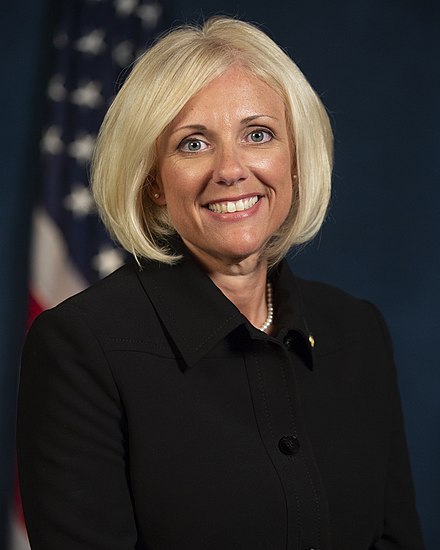It’s a three-star failure for a five-star program.
The National Highway Traffic and Safety Association says it may add pedestrian safety tests to its New Car Assessment Program for the first time in agency history, but it won't use those tests as part of a "five-star" car rating system that only cares about the safety of people inside the vehicle.
“It’s a step in the right direction, but the problem is that this entire process of updating NCAP has taken far too long,” says Peter Kurdock, general counsel at Advocates for Highway and Auto Safety. “We're not even at the point where they're actually fundamentally changing the program yet. It's just more proposals.”
On Monday, NHTSA began seeking public comment on proposed updates that would include tests determining how well cars protect individuals outside the vehicle. The agency's move came one week after 27 members of Congress signed a letter urging the U.S. Department of Transportation to include pedestrian protections and driver’s seat visibility as key criteria for NCAP.
NHTSA says adding the tests is just the start of a comprehensive update to NCAP, which was required by the 2021 infrastructure bill. The tests would provide information to consumers about how safe a car is for pedestrians — for example, whether or not it features crash-avoidance technology like automatic emergency braking and how well the car is equipped to minimize pedestrian collisions and injuries.
But the tests will not change whether a car earns “five stars” for its safety rating. That rating will still be calculated by how well a car protects the driver. In its request for public comment, NHTSA claimed it would not change the five-star system “in order to accelerate the adoption of pedestrian protection features into new vehicles.”
Transportation advocates have sought major changes to the 44-year-old NCAP program for the past decade as pedestrians are dying in record numbers. Under the current NCAP, a car does not receive an improved star rating if it features crash-avoidance technologies like automatic emergency braking, blind spot monitoring or pedestrian detection.
“[The NCAP] does not take into account the interests of occupants of other cars at all; if it did, it would award vehicles high scores for minimizing injury to them,” says University of Iowa law professor Gregory Shill. “If NCAP included a metric for vehicles’ risks to third parties, including pedestrians, then conscientious consumers could incorporate that into their purchase decision.”

Last week’s Congressional letter specifically requested that pedestrian safety and driver’s side visibility be included as criteria for a vehicle’s safety star rating. Last year, the ratings system was blasted as “near irrelevance” by National Transportation Safety Board director Jennifer Homendy in a scathing letter to NHTSA.
“How is it possible that a car in the U.S. with none of the currently available collision-prevention technologies could get a top rating?” Homendy wrote. “It’s unacceptable.”
The inclusion of pedestrian safety tests is a small victory for the transportation community, but the U.S. will remain firmly behind Europe’s NCAP standards and pedestrian fatalities. In 2009, the E.U. adopted the Pedestrian Safety Regulation that required manufacturers to implement technologies that would bolster pedestrian safety. In 2019, it added rules prioritizing pedestrian safety like requirements for automatic emergency braking and automatic speed detection, among others. And the U.S. isn’t merely lagging behind Europe: according to Shill’s 2022 paper Regulating the Pedestrian Safety Crisis, 44 countries around the world had adopted pedestrian safety standards by 2015.
Monday’s announcement also doesn’t address driver visibility, a growing source of frustration among transportation advocates and the members of Congress who signed the letter. Americans continue to prioritize “light trucks” (SUVs, crossovers etc.) that are more likely to be involved in collisions with pedestrians that end up being more lethal, but pedestrians are unlikely to see any imminent changes to NCAP that assess driver-side visibility.
The absence of serious changes to the NCAP puzzles transportation safety advocates who say the worsening pedestrian safety crisis in the U.S needs to be solved with government regulation requiring industry compliance, not merely asking car buyers to pick a car that is safer for strangers.
“It's a program designed to give consumers the information they need when they walk into a new car dealer to find out if the car they're buying is safe. And the other part of the program is essentially to incentivize manufacturers to make their cars as safe as possible,” says Kurdock. “The grade has become so hollow it has become a participation award instead of an actual real grade.”
If Congress continues lobbying for NHTSA to make more substantive improvements to NCAP, however, it might generate a response: NHTSA began studying "frontover" crashes last year after Sen. Richard Blumenthal (D-Conn.) expressed concern about the dangers that large SUV blind spots pose to children. For now, the transportation community will have to accept modest progress, even if there is a widespread desire to overhaul the program.
“The agency is continuously putting out proposals and ideas to update NCAP, but we never see anything past the ideas space. And that's really the troubling part,” says Kurdock. “And to put even a finer point on it. The proposals themselves really lacked a lot of substantive details.”






